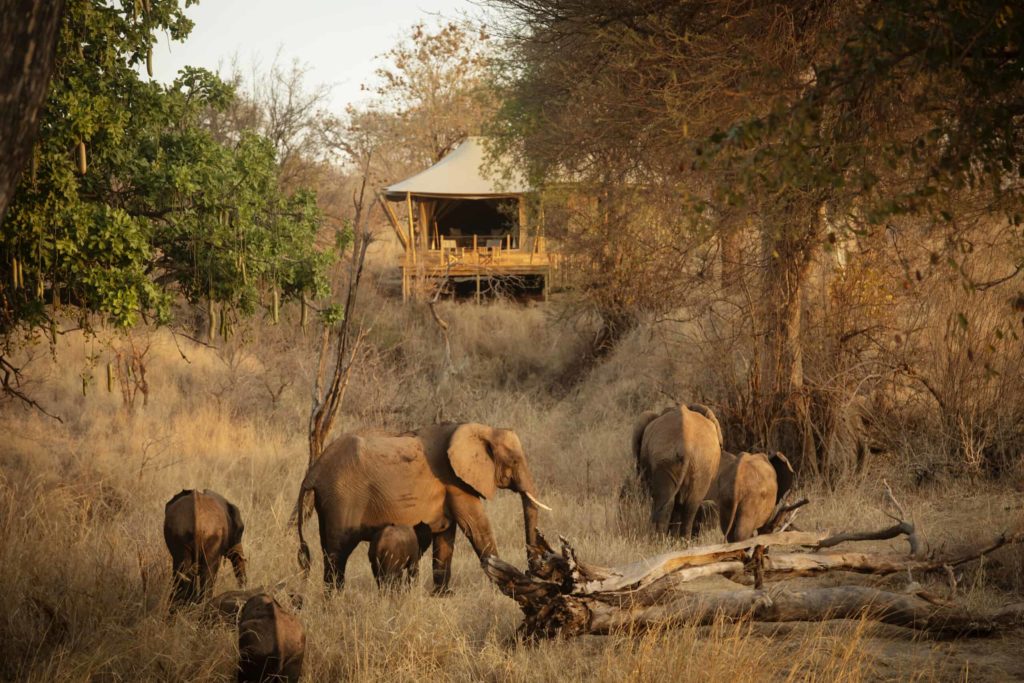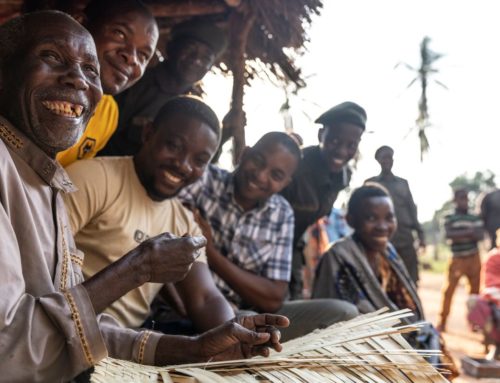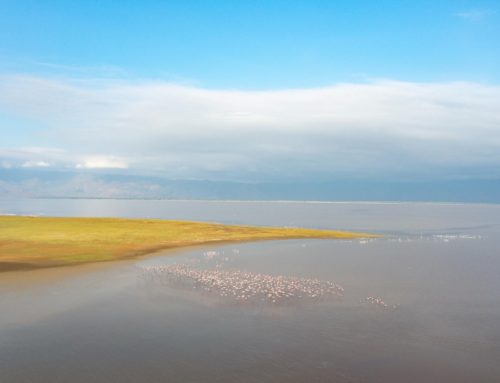Introduction
Across the vast landscapes of Wildlife Management Areas (WMAs), revenue is more than a number, and success is not just financial. Revenue serves as the backbone for communities working to balance conservation with survival. Here, pursuing financial sustainability is more than just a goal—it is a lifeline.
For WMAs to survive, they must operate like social enterprises where every dollar counts. Every dollar generated is not just an addition to the bottom line; it represents an essential bridge between the needs of wildlife and the well-being of local communities. For these places, sustainable revenue becomes a crucial foundation, empowering communities to operate these areas as social enterprises. But the question remains: are we genuinely building systems that nurture both the land and its people equally?
We take it a step further by asserting that the question is no longer solely about WMAs achieving financial growth; it’s about whether conservation efforts can financially sustain themselves to thrive. With annual operating costs reaching over $200,000—not including additional funds needed for community development—these areas bear a significant financial burden. The success of conservation today depends on establishing revenue-generating models that cover these expenses while also reinvesting in community growth. Without balancing income and expenses, the sustainability of these lifelines for both nature and communities is at risk.
This blog will explore how a strategic approach to revenue generation can provide the financial independence necessary for CCAs to thrive. We will discuss why viewing conservation as a social enterprise is crucial and how each financial decision impacts the survival of both the community and the wildlife it safeguards. By exploring the economic foundations of conservation, we gain a clearer understanding of the decisions needed to make these areas self-sustaining, paving the way for a resilient future where communities and conservation thrive together.
The Honeyguide Approach
Honeyguide supports revenue generation in conservation by viewing Wildlife Management Areas (WMAs) as social enterprises, where creating income and efficiently managing expenses are essential to long-term success. This approach involves offering expertise in tourism, governance, business acumen, and the carbon trade, as well as developing partnerships to strengthen management capacity.
A key aspect of Honeyguide’s vision is ensuring that WMAs are equipped to operate independently over time, reducing dependence on external support. Sustainability, in this context, goes beyond mere survival—it’s about creating thriving, self-reliant models. Central to this effort is strong governance, which ensures equitable revenue sharing, builds investor confidence, and lays the foundation for self-sustaining income streams.
While donor funding plays a pivotal role in the early stages of development, the ultimate goal is self-sufficiency. By introducing business principles into discussions with local communities, Honeyguide demonstrates how conservation can evolve into a sustainable enterprise. This approach reframes conservation efforts, positioning WMAs as socio-economic enterprises with a focus on sustainable revenue generation, community benefits, and accountability.
Randilen WMA and Makame WMA have become benchmarks for effective management in Tanzania. These WMAs, funded through tourism and carbon investments, showcase how communities can protect natural resources and achieve financial stability by adopting innovative business models. Such success stories underline Honeyguide’s commitment to supporting communities in transforming conservation into a sustainable, community-driven endeavor.

Decoding Revenue Streams
For a community-driven initiative to succeed, it must deliver real value to the local people. The truth is, money plays a crucial role. Without financial backing, dreams remain ideas. In conservation, diverse income streams are key, and WMAs can generate revenue through photo tourism, hunting and carbon. Honeyguide has supported WMAs like Makame and Randilen in developing business plans that allow them to operate independently. Tools like the Business Enterprise Sustainability Tool (BEST) assist WMAs in identifying and maximizing these income opportunities.
Achieving financial independence is essential for the long-term success of both conservation efforts and local businesses. Honeyguide’s approach helps communities gain the skills and tools needed to manage their wildlife areas effectively and profitably. By focusing on effective governance, robust financial management, and diversified revenue streams, WMAs are empowered to thrive and sustain themselves without relying on external aid. This model ensures that conservation efforts benefit both the environment and the communities that depend on it.
Case Studies: Randilen and Makame Success Stories
Honeyguide prioritizes revenue generation, fund distribution, and accountability in WMAs. With fewer than seven of Tanzania’s 21 WMAs being well-managed and financially stable, improved management practices are crucial. Randilen and Makame lead as success stories, excelling in tourism and carbon investments, thus making them Tanzania’s most sustainable WMAs.
Randilen
 Randilen, a community-based tourism destination, generates its main revenue source from photo tourism. Building on its achievements, Randilen has ambitious plans to expand tourism, aiming to generate $732,000 annually by 2028, thus securing its financial stability and sustainability.
Randilen, a community-based tourism destination, generates its main revenue source from photo tourism. Building on its achievements, Randilen has ambitious plans to expand tourism, aiming to generate $732,000 annually by 2028, thus securing its financial stability and sustainability.
You can explore their detailed tourism development plan to see how they work towards financial independence.
Read the report here
Makame
With a growing focus on climate change, carbon financing has become a vital revenue stream for WMAs. Makame WMA leads Tanzania by selling carbon credits from forest sequestration to international markets. Makame collaborates with carbon certification bodies to ensure compliance with standards and attract buyers.
Makame WMA experienced a remarkable 980% revenue increase from 2017 to 2021, driven by effective governance and carbon credits. From 2023 to 2024, revenue from carbon credits rose by 130%. The local community deeply values Makame for its positive impact on their livelihoods; in 2023 alone, residents received nearly $200,000 to support local investments. These funds enable villages to support their projects, significantly boosting income generation and community conservation. Makame WMA has also facilitated several building initiatives, including a maternity ward at Makame Dispensary, an extension to Katikati Dispensary, and a new executive office for Irkiushiobor and Ngabolo villages, among other developments.

Engaging Communities for Financial Sustainability
At the heart of revenue generation is community involvement. Honeyguide believes in empowering local communities to take ownership of their natural resources, ensuring they benefit directly from conservation efforts. By offering training and support in governance, financial management, and enterprise development, communities can generate revenue that supports both their livelihoods and wildlife protection.
Navigating the Challenge of Revenue Generation
As we focus on revenue generation in conservation, it is important to remember that money is not always the solution and can sometimes add pressure and challenges for communities. Each revenue stream comes with its unique hurdles.
Tourism, for example, can be highly capital-intensive, requiring substantial infrastructure such as roads, gates, and accommodations. Depending on the level of investment, this raises costs and expectations. A simple campsite poses fewer demands and risks for tour operators and communities. In contrast, high-end luxury camps often bring higher stakes, potentially leading to tensions over land use, expectations of exclusivity, and cultural interactions. Questions like whether livestock grazing is seen as an “eyesore” or a cultural value-add to the tourist experience can affect the relationship between tour operators and local communities, with some operators adopting a more adversarial attitude, believing they are the sole contributors to success.
Carbon credits are generally low-risk and cost-effective, making them a less stressful choice for communities. They must avoid deforestation and adhere to best practices and legal guidelines.

Hunting can be challenging as hunters often develop a sense of ownership over the land, viewing hunting blocks as their personal territory rather than shared community assets. This shift in perceived power can cause conflicts with local communities over land use, with hunters and residents operating in isolation and holding different views on land management.
Once communities begin generating income from these activities, another layer of stress emerges—managing the revenue. With significant cash flows comes the responsibility of developing proper governance and accountability systems to ensure effective and transparent use of funds for long-term benefits.
Conclusion: Securing the Future through Financial Sustainability
Raising revenue isn’t just about making profits—it’s about safeguarding the future of conservation and communities. Honeyguide’s strategy, rooted in innovation, community engagement, and diversified income sources, is a model for achieving financial sustainability in conservation. By adopting these practices, businesses and WMAs can secure the resources needed to flourish, creating a harmonious future where people and wildlife thrive together.
Photo credits: Monica Dalmasso & Eliza Powell






